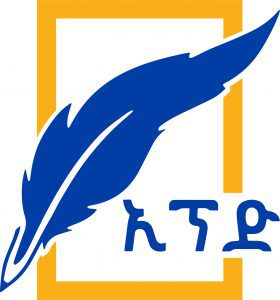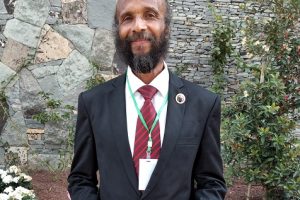
A weird feeling would possibly rock your heart, if you happen to watch a white sea of people slowly flowing beneath your feet, clapping their hands and clamoring biblical hymn in unison in tandem with beats of a jumbo drum. You don’t need to take any risk or invest any money to experience this feeling, as it is the case with that of watching the Blue Planet, earth, from a vehicle high up in space. Provided you are in Ethiopia, all you have to do is position yourself on the balcony of the first or second floor of a building flanking the main road near to a church on a special big day in Ethiopian calendar, the Epiphany day.
One western tourist who evidently had experienced the above mentioned strange magnetism of Timket celebration wrote: “Priests and Deacons, bearing golden– rimmed silk robes and umbrellas, perform rollicking dances and songs. Accompanied by a slowly building tempo of drums, metal sistrums, and pilgrims’ clapping, they[The priests] lead the crowd in an immensely moving procession. All these remind me of scenes described in the Bible when the Israelis welcome Moses upon his return from Mount Sinai carrying the Ten Commandments.”
Given its spiritual and cultural importance and exuberance and its uniquely flamboyant features with immense power in captivating the imagination of even non-believers, one may wonder why Timket was so late in getting into UNESCO’s Representative List of Intangible Cultural Heritage of Humanity, until last year.
At the beginning of last week, Ethiopian Orthodox Christians, young and old, men and women had been marching, dancing and ululating in the streets in celebration of Epiphany. It is one of the most colorful holidays celebrated by Ethiopian Christians in the month of January within a few days after the celebration of Christmas. For Ethiopians, January is a month of celebration like September. During this time of the year, the barn is fuller, the cattle are fatter, and the farmers are less busy and have reaped the produce they have been toiling for throughout the year. So, most of the communities in Ethiopia, farmers being the majority, are in a better position to celebrate the above mentioned holidays lavishly. Even most of the weddings are conducted in this month.
Ethiopian Epiphany, Timket, as it is known by the locals, is observed by Ethiopian Christians essentially outdoors in communion. It is not as such a one day holiday as it is indicated in the calendar. Actually, it is a three-day festival starting from Ketera, the eve of Ethiopian epiphany and ends with the festivity of Kana Ze Gelila on the third day. The epiphany eve, Ketera, is celebrated almost equally to the Epiphany itself. One thing that sets Timket aside from other holidays is it is a time when all the replicas of the ark of the covenant, Tabots are carried out into the open from their exclusive location inside the church and spend a night together in a tent on open field near a water source[timkete-bahir], meaning The Sea of Timket. This process is a reflection of a major biblical event relating to the baptism of Jesus in the Jordan River.
With the entourage of priests and the thousands of chanting and ululating laities, the Tabots move in a spectacular procession from their church of permanent placement to the timkete–bahir during the late afternoon of Epiphany eve. Timket is in away showcases how Ethiopians orthodox Christians take their religion seriously. On the night of the epiphany eve, the laities spend the night in the open field circling the tent where the tabots are placed, attending the liturgy, of the priest, mahlet, that went through the night.
On the morning of the epiphany day, as an act of renewal for their baptism vows, almost half of the Ethiopian population [about 44%] converge around a nearby timkete-bahir in their respective localities and towns, and rub shoulders and vie to get their fair share of sprinkles of the relatively short supplied holy water that is splashed by the priests and their aids. The alarmingly growing number of the congregation of the timkete-bahir in every town is a clear testimony to the population explosion the country is experiencing in recent years.
Then a few hours later after the timkete-bahir ceremony, the procession for the return of the Tabots to their respective churches begins in a similarly colorful and vibrant way like that of the previous day. On Timket, Ethiopian Orthodox Christians look their best and dress to kill. Even they have a saying which is roughly translated as “A dress that is not good enough and available to be worn on Timket day, should well be torn out and discarded.” It is common in Timket to see several groups of young men and women with the same outfits, shoes, and hairstyles. Timket provides a venue for the young to show off their vocal talents. Moreover, it is also a good time for bachelors to select their future wives as all the girls in town are out in the open to celebrate the holiday.
An American tourist who was attending Timket told ENA: “It [Timket] is something not to be missed. I think it’s a fabulous idea that your country preserves its traditions. I think that’s very important. Many other countries do not have anything like Timket at all. Timket is quite amusing.”
As Lalibela is to Ethiopian Christmas, so is Gondar to Epiphany. The historic city of Gondar, often called the Camelot of Africa, is the venue for the biggest and the most spectacular celebration of Timket. Each year, on Timket week, like the past week, Gondar is inundated with pilgrims and thrill-seeking tourists from around the world. The phenomenal Timket has been observed by Ethiopian Christians around the world and has got wide coverage by both the online and mainstream media.
The Ethiopian Herald Sunday Edition 26 January 2020
BY SOLOMON WASSIHUN





